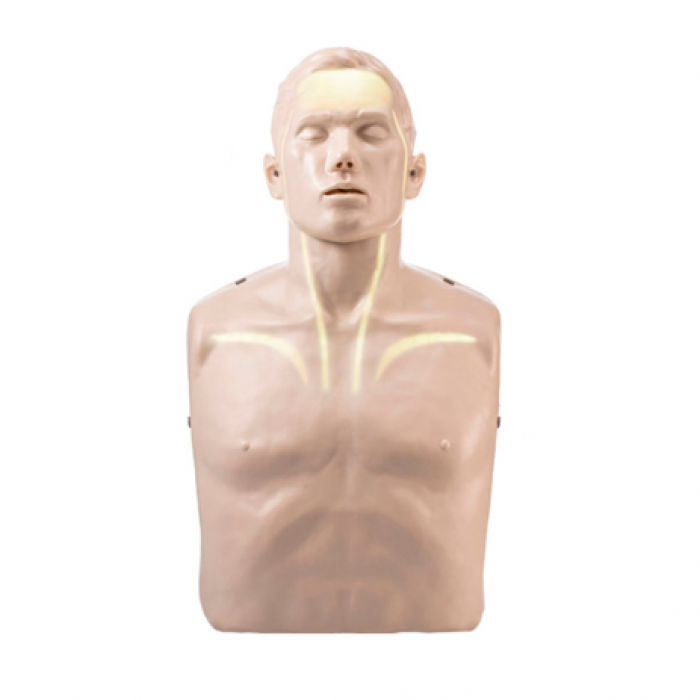Brayden CPR Manikin With Illumination LED Lights
The manufacturer of this item is currently experiencing major stock issues and lead times cannot be guaranteed.
The Award-Winning, Brayden CPR Manikins present a highly innovative and effective way to teach and learn both the “how-to” and “why to” perform CPR. It is the first-ever manikin to allow users to visualise the effects of CPR.
- Brayden CPR Manikin with Illumination LED Lights
Brayden is equipped with three sets of interrelated LED lights that actually illuminate in direct relation to the depth and rate and compressions and clearly demonstrate the overall quality of CPR.
There are two choices of LED colour: Red or White. The functionality of the lights is the same and the colour choice is down to individual preference.
A Beneficial Training Tool
Being able to see the how CPR is having a direct effect on the flow of oxygenated blood to the brain, reinforced with an audible (on/off) clicker if required, increases the speed at which skills can be both learned and retained. This ultimately increases confidence and competence in CPR skills.
Brayden both looks and feels very realistic and is anatomically correct, giving people a better understanding of what to expect when performing CPR. Learners are able to perform basic upper airway management functions and expired air is expelled from the back of the manikin improving hygiene.
More Information
Got a question about the Brayden CPR Manikin? Our defibshop team are here to help.
Simply call 0161 776 7422 and one of our advisors will happily assist in finding the perfect product for you.
| FDA Approved | No |
|---|---|
| Dangerous Goods | No |
The Award-Winning, Brayden CPR Manikins present a highly innovative and effective way to teach and learn both the “how-to” and “why to” perform CPR. It is the first-ever manikin to allow users to visualise the effects of CPR.

